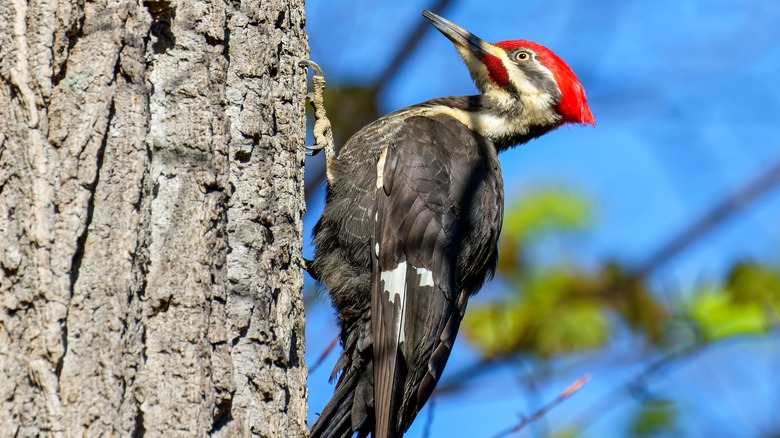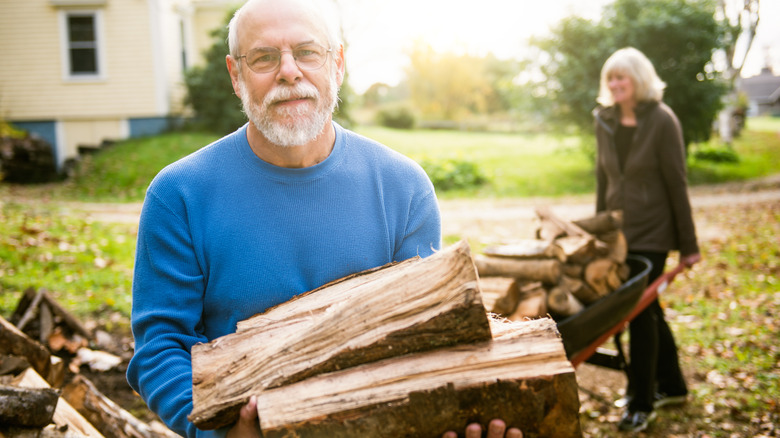Garden Trees, Shrubs & Vines
Joanna Marie
If you want to make your garden more welcoming for woodpeckers, it’s important to change the way you view those fallen branches and standing dead trees. Deadwood, often seen as mere garden waste, is actually a crucial habitat for many species, especially woodpeckers. As a beginner on this journey, it’s important to understand and appreciate the role of deadwood in nature. When a tree dies or part of it breaks off, it forms deadwood. This includes everything from standing dead trees to fallen branches and logs. While it may seem like clutter, each form of deadwood is a potential home for wildlife.
According to a 2024 study published in the journal Forest Ecology and Management, about 20 to 25% of forest species depend on deadwood, and woodpeckers are among the primary beneficiaries. These birds use deadwood for nesting, feeding, and as a communication channel through their iconic pecking. This information is key to turning your garden into a woodpecker-friendly habitat. Your first step is simple: don’t be too quick to tidy up fallen branches and snapped limbs. Leaving some of these natural elements in place can create an inviting environment for woodpeckers. However, safety should always be your priority. Make sure that any standing deadwood in your garden doesn’t pose a danger to you or your property. If in doubt, it’s wise to consult with a professional arborist.
The importance of deadwood for woodpeckers

Nikolay Zaborskikh/Shutterstock
As mentioned, woodpecker reliance on deadwood is multifaceted, serving as a critical element for their survival and well-being. These birds, known for their distinctive pecking, find in deadwood a source of food, a place for nesting, and a means of communication. When foraging, they excavate dead trees and fallen logs, searching for insects and larvae, a major part of their diet. This foraging behavior also plays a crucial role in pest control, making these birds invaluable for maintaining the health of your garden and local ecosystems.
When nesting, these birds prefer to carve out nesting cavities in soft deadwood, which provides a safe and insulated environment for raising their young. A 2007 study in the International Journal of Avian Science reveals fascinating insights about the nesting preferences of various woodpecker species. It was observed that both Dendrocopos major and Dendrocopos minor usually choose dead trees to build their nests. However, the former is more versatile, as they are also comfortable nesting in living trees. On the other hand, the latter less frequently opt for living trees for their nests. In contrast, the green woodpecker (Picus viridis) doesn’t show a strong preference for either dead or living trees for nesting. Notably, smaller woodpecker species seem to rely more heavily on dead and decaying trees for their nesting sites. This study underscores the importance of preserving deadwood in natural habitats, as it plays a significant role in the nesting choices of various woodpecker species.
Tailoring your garden for woodpecker-friendly habitats

Ferrantraite/Getty Images
When turning your garden into a woodpecker wonderland, safety is important. Take a look around and spot those dead trees or branches that don’t pose any danger. These spots will be gold for woodpeckers, offering them perfect places to forage and nest. Any deadwood that looks like it might fall and cause harm needs to be dealt with. Another way to attract woodpeckers is by making a log pile. Find a quiet corner in your garden and stack up those fallen logs and branches. Over time, as they start to decompose, they’ll attract all sorts of insects — a veritable feast for woodpeckers. Feeling a bit crafty? Why not build a log wall? This can be a fun DIY project and a great feature in your garden. Stack logs vertically or horizontally to create a structure that not only looks interesting but also serves as a great habitat for wildlife.
One other creative idea is to create a ‘dead hedge.’ This involves weaving branches, twigs, and leaves together to form a barrier. This provides nooks and crannies for insects, making it another great dining spot for woodpeckers. Lastly, you can make your own compost heaps — this is great not only for recycling garden and kitchen waste but also for attracting a host of insects and bugs. Woodpeckers, always on the lookout for a snack, will love this.




